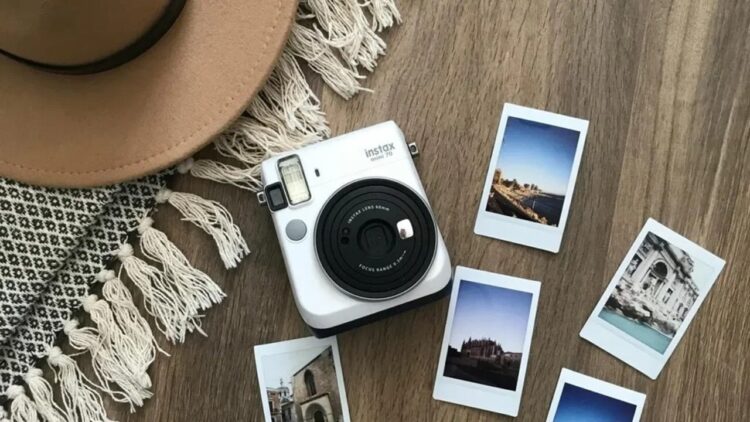Before the smartphone era — if you can recall those days — capturing a great photo demanded considerable effort. Today, mastering phone photography is accessible to all without requiring high-end cameras or complex desktop editing tools. Brands are also catching on—recognizing these visuals’ enduring significance in marketing strategies. However, mastering phone photography is not merely about pointing and shooting. Amidst countless mediocre smartphone photos, capturing stunning images requires skill and technique.

Read Also: 5 Summer Fruits That You Don’t Want To Miss For A Happy and Healthy Belly
Mastering Phone Photography: 5 Tips & Tricks for Capturing Great Photos
1. Practice
Photography is truly a way of seeing and presenting your unique perspective on the world. Smartphone photography has gained immense popularity, with over a trillion photos taken globally each year. Research indicates that 92% of these photographs are captured using smartphones. However, you can make your photos stand out by consistently practicing your skills.
Maximize your photo opportunities by embracing quantity. With your phone readily available most of the time, you can take advantage of the chance to capture exceptional photographs anywhere and anytime. Instead of settling for just one shot of a captivating subject, aim to take a series of 10, 20, or even 30 photographs. Then, review your pictures to discern your favorites and understand what makes them stand out.
Take as many photos as you can

Experiment with various perspectives to add a distinctive touch to your photos. Opting for a unique and unexpected angle can significantly enhance their memorability, creating a sense of depth or height within the composition. This approach distinguishes your images, as many smartphone photographers shoot straight on or from above.
For example, explore capturing photos from a slight distance while utilizing the sky as negative space, as demonstrated in the first photo below. Alternatively, experiment with a slightly downward angle for a fresh perspective.
2. Get to know your camera
Mastering smartphone photography begins with understanding how your phone’s camera works. Take the time to delve into its different modes and settings, including focus adjustment and exposure control. While many phones have automatic white balance, you might need additional apps to access features like those in DSLR cameras.
Furthermore, using a modern phone with an impressive camera is crucial. When selecting a device, consider factors like resolution and low-light performance. Watch for advancements such as built-in telephoto and ultrawide lenses, as they can significantly expand your creative possibilities. Additionally, older phone technologies can be leveraged to create captivating images with a vintage aesthetic.
Take candid
Mastering phone photography involves understanding why candid photos can be so impactful. They excel at capturing genuine emotion and the essence of a moment. To achieve these shots, take as many photos as possible. This approach provides a broader selection, increasing the likelihood of capturing that perfect moment when everything aligns—like everyone’s eyes open, a slight tilt of the head, or finally catching a friend’s elusive smile with teeth showing.
3. Learn how to use the light

Mastering phone photography hinges on mastering light. Understanding how to use light effectively can dramatically enhance the impact of your photos.
To elevate your phone photography, learn how to utilize light effectively. Experiment with lighting conditions, such as the golden hour in the morning or evening, for warm, soft lighting, or use a harsh spotlight to create dramatic shadows. Don’t forget to adjust the exposure to optimize the available light.
Utilize natural light whenever possible. It’s not limited to landscapes; you can leverage natural light sources even after dark. Play with shadows or create striking silhouettes using ambient sources like windows or surrounding buildings. Experimenting with light in these ways will refine your skills in mastering phone photography.
Experimenting with backlighting can add a captivating touch to your photos. Positioning your primary light source behind your subject rather than in front of it can create a stunning effect.
After capturing the photo, consider using the exposure tool in your preferred photo editing app. This tool allows you to adjust the image’s brightness, enhancing it without introducing excessive graininess. Experimenting with exposure adjustments can help you achieve the desired look for your photos.
4. Focus on one subject at a time

Mastering phone photography involves focusing on one subject at a time. While composition plays a significant role in a photo’s appeal, the subject is equally crucial. Some of the most captivating photos feature just one intriguing subject, akin to portrait photography.
When capturing a single subject, invest additional time in setting up the shot. Pay attention to details like lighting, angle, and background to ensure the subject stands out and the composition is compelling. Mastering the art of focusing on one subject can significantly elevate your phone photography’s impact.
In mastering phone photography, explore the realm of abstracts. Abstract photos offer a glimpse into the essence of an object or a series of objects without revealing their entirety. They aim to create unexpected and unique images from everyday subjects.
One way to achieve this is by cropping a specific abstract portion from an otherwise typical photo. Alternatively, take close-up shots of objects that intrigue viewers, prompting them to admire and contemplate the subject’s identity. Subjects with patterns or repetition, such as the umbrellas in the photo below, are excellent for abstract photography.
By delving into abstract photography, you can push the boundaries of creativity and produce captivating and thought-provoking images with your phone.
5. Compose each photograph

Mastering phone photography involves understanding the importance of composition. From iconic photographers like Annie Leibovitz to Richard Avedon, careful arrangement of the picture plane is fundamental in creating impactful images.
However, you don’t need to be a professional to capture unique and beautiful photographs. What’s crucial is finding your way of composing images.
One effective technique is using gridlines to balance your shot. Activate the camera’s gridlines feature on your smartphone to superimpose a series of lines based on the “rule of thirds” principle. This principle divides the image into thirds horizontally and vertically, resulting in nine parts in total. You can create well-balanced and visually appealing compositions in your phone photography by aligning your subject or critical elements along these gridlines.
Mastering phone photography doesn’t end with capturing the shot; editing is crucial in making your photos visually compelling. Filters can be handy, especially for two primary purposes: 1) Removing blemishes and 2) enhancing food photography to make dishes look more appetizing.
Beauty filters are commonly used to refine facial features, and now, even the iPhone Photos app offers a variety of similar filters. Apps like Pho. to automate facial retouching, simplifying the process. For food photography, consider using apps like Foodie, which provides specialized filters optimized for different types of food, enhancing their visual appeal.
However, the options don’t end there. Numerous excellent photo and video editing apps are available for mobile devices, offering a range of editing tools. Exploring these apps can significantly enhance your editing capabilities. If you prefer desktop editing, familiarize yourself with Photoshop shortcuts to streamline the editing process.
By incorporating editing techniques and tools, you can elevate your phone photography from good to outstanding, mastering the art of visual storytelling through images.
To get more of our exclusive content on Health Care and Lifestyle. Follow us on YouTube and Instagram.






